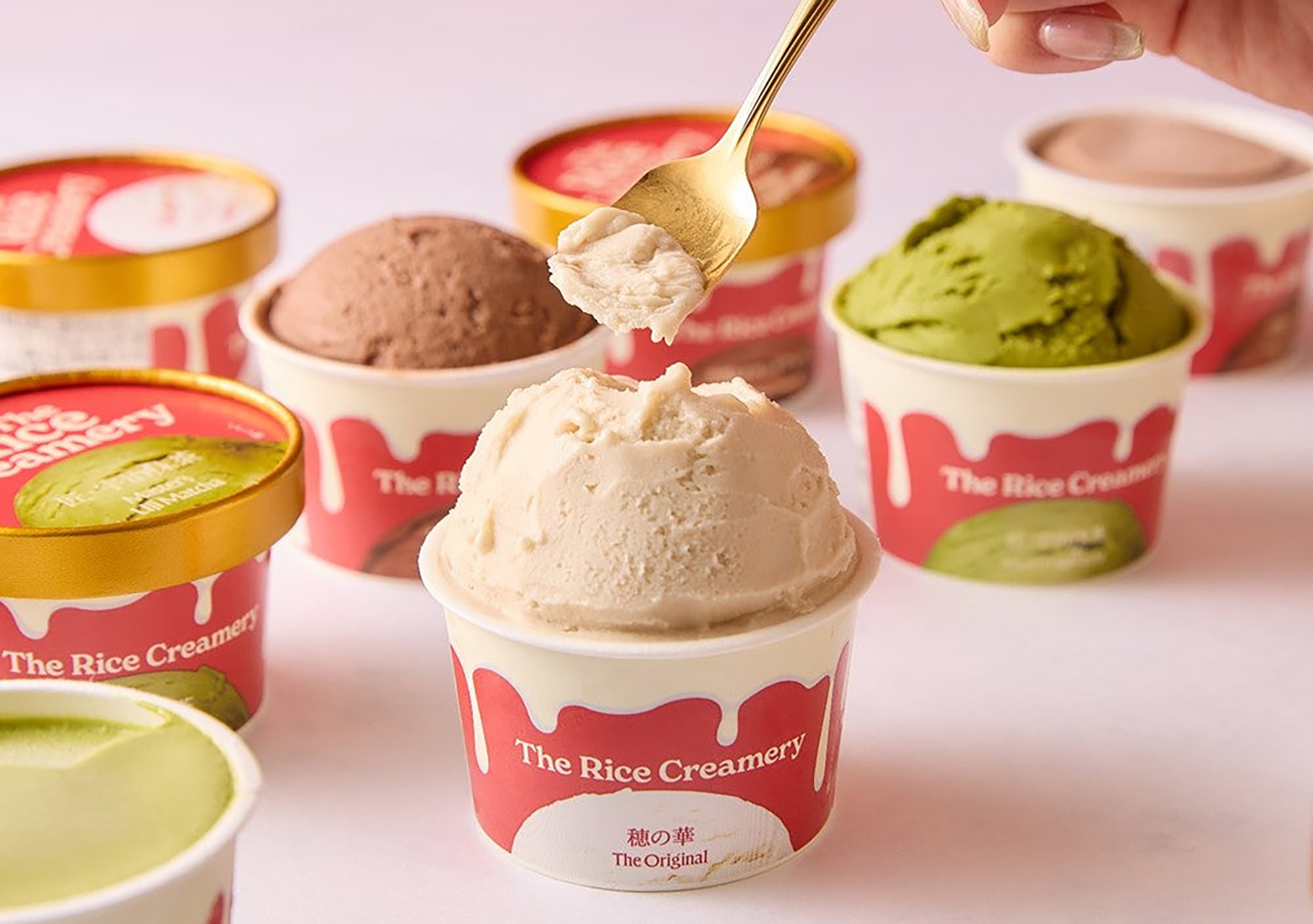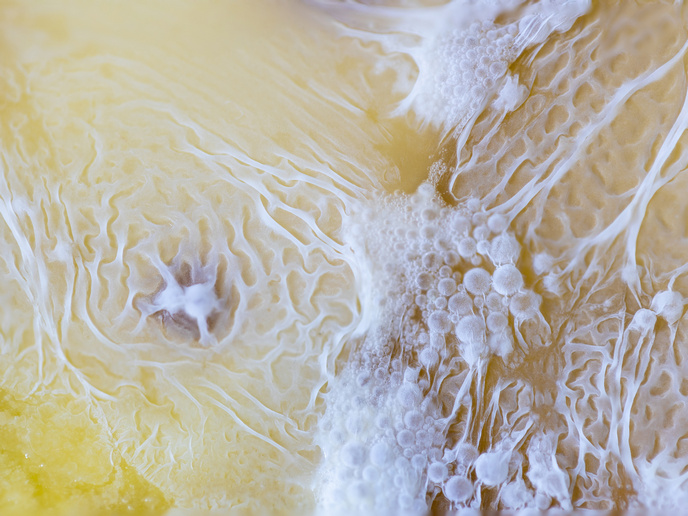

Kinish debuts The Rice Creamery, a vegan ice cream rooted in Japanese tradition and molecular farming
Japanese food-tech company, Kinish, has launched The Rice Creamery, a new plant-based ice cream brand that puts rice at the center of the dessert bowl. The range, unveiled this month, trades dairy for the natural sweetness and creamy texture of Japanese rice, with plans to expand from its Tokyo debut to the USA later this year under the name The Rice Cream.
The rollout marks a significant milestone for the Tokyo-based startup, which is positioning rice not only as a culinary hero but as a platform for advanced molecular farming. Kinish’s longer-term ambition is to use rice plants to produce dairy proteins such as casein, a key component in replicating the functional qualities of milk.
The Rice Creamery launches with three varieties: Honoka (Original), Master’s Uji Matcha, and Elegant Dutch Chocolate. Rather than mimicking milk, each flavor showcases the unique characteristics of Japanese short-grain rice – naturally sweet, plump, and slightly sticky – delivering a rich, layered texture that the company says even traditional ice creams sometimes lack.
Honoka pairs rice syrup with cashew paste for a creamy, subtly sweet profile. Master’s Uji Matcha, created in collaboration with tea processor Hotta Katsutaro Shoten, adds the earthy depth of premium Uji matcha. Elegant Dutch Chocolate uses Dutch cocoa powder, nodding to Japan’s historical introduction to chocolate via the Netherlands.
Each 120ml tub is priced at ¥347 (US$2.35) and is available at the Tokyu Store’s Toritsu-Daigaku branch and online via Seijo Ishii, with expansion into convenience stores and major cities across Japan planned.
The Rice Creamery’s products contain 60% less sugar than the average ice cream in Japan and, according to the company, generate 62% fewer greenhouse gas emissions than dairy equivalents. That combination is aimed squarely at a growing consumer base concerned with both nutrition and environmental impact.
Kinish’s timing aligns with shifting market dynamics. Dairy farming in Japan is under pressure from economic constraints and environmental scrutiny, while domestic milk consumption has been declining since the 1990s. At the same time, up to 90% of the Japanese population is lactose intolerant, and the number of people identifying as vegan has risen from 1% in 2017 to 2.4% in 2023.
Before the official launch, Kinish held public taste tests that drew praise for both flavor and mouthfeel. Tasters described the ice cream as “satisfyingly delicious” and “rich and flavorful, yet leaving a pleasant aftertaste.” Such feedback suggests the brand is positioning itself not simply as a vegan substitute, but as a premium dessert with broad appeal.
Rice-based ice cream alternatives are rare in Japan. Morinaga Company offers two products under its Okometo brand, while Singapore’s Smoocht sells a brown-rice-based range. That leaves space for Kinish to define the segment and expand it internationally.
What differentiates the company is its dual strategy: developing consumer-facing products while simultaneously using rice as a production host for dairy proteins through molecular farming.
Beyond ice cream, Kinish is working to produce casein inside rice plants. Casein is the main protein in cow’s milk and is critical to replicating dairy’s functional properties in cheese, yogurt, and other products.
Instead of fermentation tanks, molecular farming uses plants themselves as “bioreactors,” genetically engineering them to express specific proteins. Kinish grows dwarf rice plants just 20cm tall in vertical farms, enabling dense planting with reduced land and water use. The plants can be harvested in less than half the time required for traditional rice farming.
Earlier this year, the company partnered with Shizuoka University to develop a plant factory optimized for dwarf rice cultivation. In February, it raised ¥120 million (US$800,000) in seed funding to accelerate both its consumer product rollout and molecular farming research.
Japan’s rice sector is already feeling the effects of climate change, with rising temperatures and erratic weather affecting yields. Domestic rice consumption has halved since the 1960s, and a recent shortage prompted the government to release 200,000 tons from emergency reserves.
By moving some rice production indoors, Kinish reduces exposure to climate risks while creating a higher-value use case for the crop. The company’s model could offer new revenue streams for rice farmers, particularly if molecular farming proves commercially viable.
Kinish’s integrated approach – leveraging rice as both a consumer product base and a protein host – gives it a distinct position in this competitive landscape.
The company’s near-term plan is to combine rice-derived casein with rice starch to create ice cream that more closely mimics dairy. Cheese is also on the roadmap, with casein-powered formulations aimed at matching the taste and melt of conventional products.
International expansion will begin in Washington, D.C., later this year, chosen for its diverse and health-conscious consumer base. Kinish sees the US market as a proving ground before targeting other cities and regions.
For Kinish, rice is more than a functional ingredient. It’s a cornerstone of Japanese food culture, reimagined for a climate-conscious era. By starting with ice cream – a universally appealing format – the company has a tangible way to introduce consumers to its bigger vision of sustainable, plant-hosted dairy proteins.
If Kinish can scale production, maintain quality, and win over consumers in multiple markets, it could make rice-based dairy alternatives a mainstream category. More broadly, its model could serve as an example of how staple crops can be reengineered for both culinary innovation and environmental resilience.
If you have any questions or would like to get in touch with us, please email info@futureofproteinproduction.com






